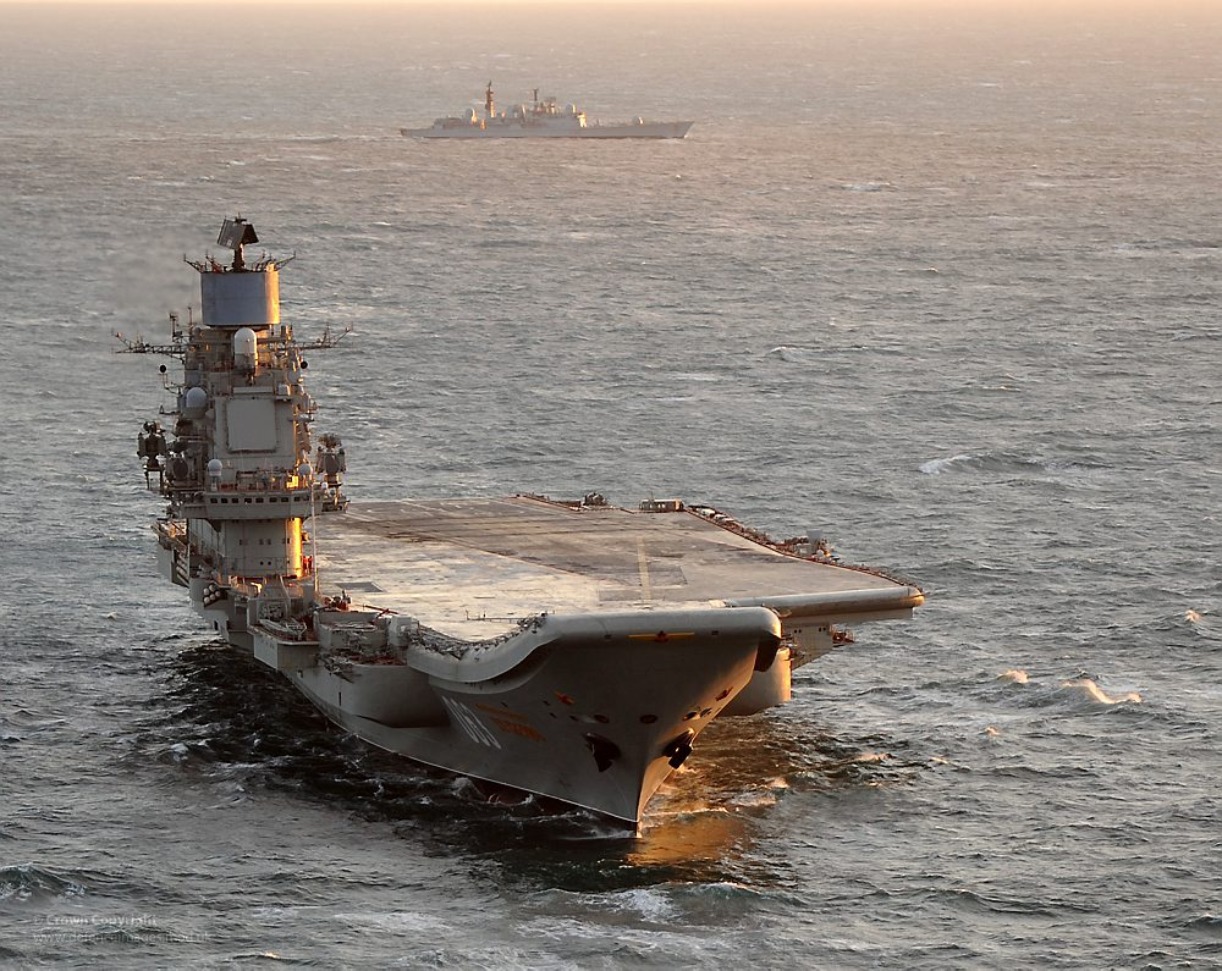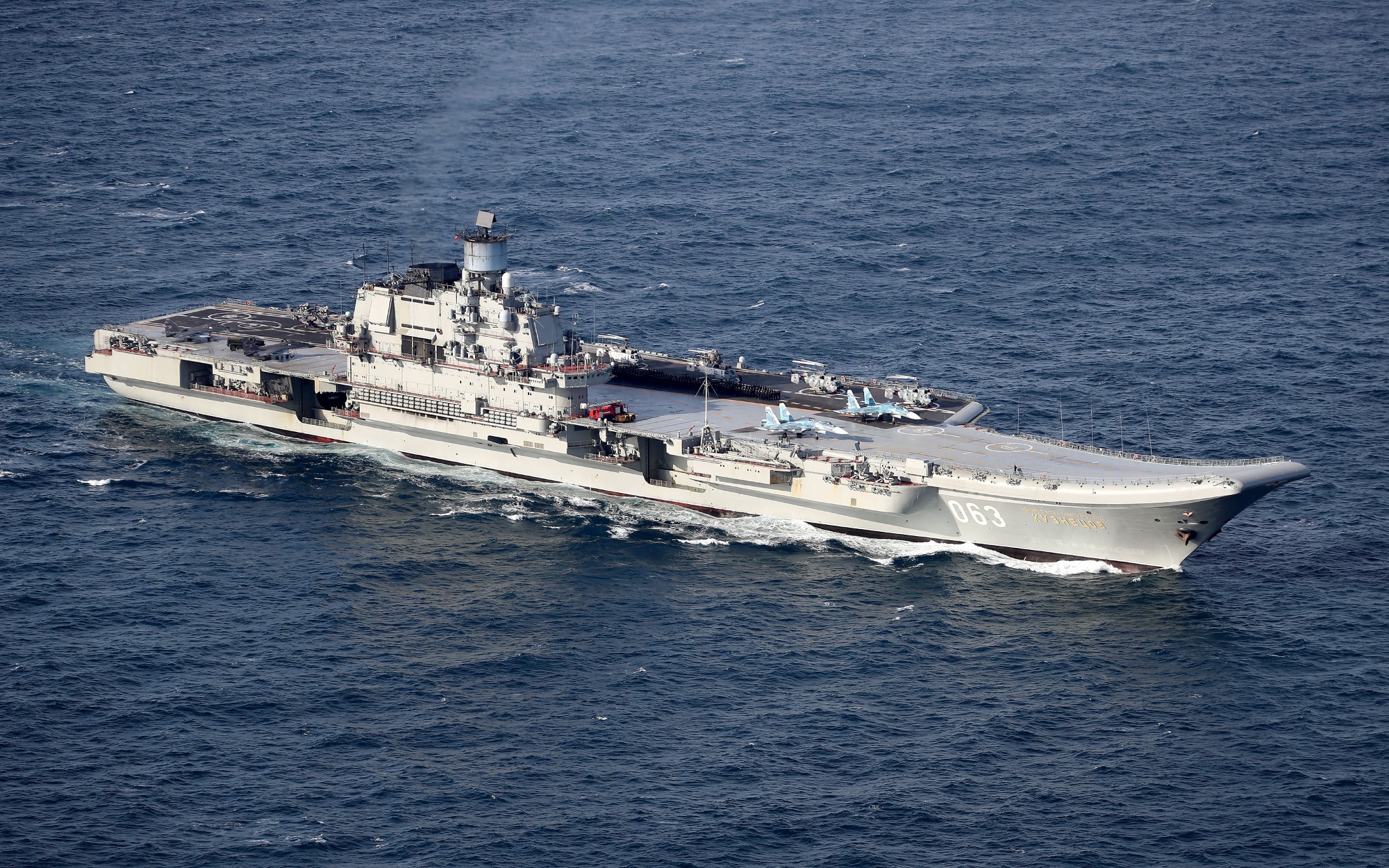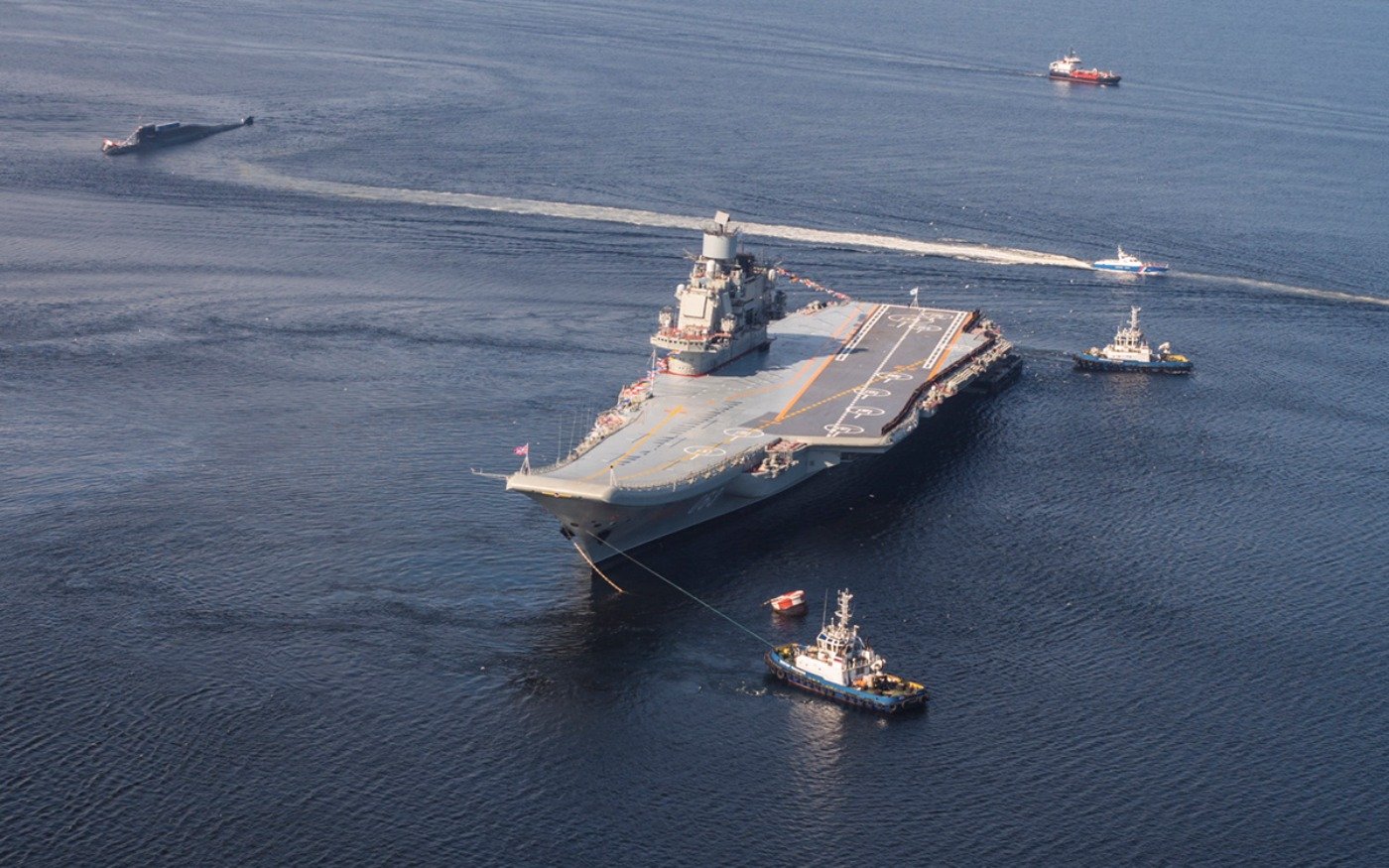Admiral Kuznetsov: Russia's Last Aircraft Has Just 1 Enemy
The Russian aircraft carrier Admiral Kuznetsov, plagued with endless mechanical and operational problems, has not participated in the ongoing Ukraine conflict due to prolonged maintenance since 2017.
Summary and Key Points: The Russian aircraft carrier Admiral Kuznetsov, plagued with endless mechanical and operational problems, has not participated in the ongoing Ukraine conflict due to prolonged maintenance since 2017.

-This Cold War-era vessel, using outdated Mazut fuel and an ineffective bow ramp for aircraft launches, highlights significant deficiencies in Russia's military capabilities. The carrier's persistent issues, including boiler failures, poor piping, and structural damage, have raised questions about the future of Russia’s naval power.
-With resources stretched thin due to the war in Ukraine, the likelihood of Russia investing in a new aircraft carrier appears low.
-In fact, this aircraft carrier has just one enemy: no willingness by Russia as of yet to scrap the carrier.
Admiral Kuznetsov: A Symbol of Russia's Naval and Military Challenges
Russia’s invasion of Ukraine has offered revealing insights into the health of the Russian military.
While Russia is often billed as a near-peer power of the United States, with a capable fighting force, the Russo-Ukraine War has laid bare the rampant deficiencies of a Russian military that has struggled to establish a foothold in the territory of a weaker neighbor.
Russia has underperformed in air, land, and sea – deploying weapons systems that have fared poorly against the Ukrainian’s low-tech defense mechanisms.
The Russian invasion has renewed focus on Russian military specifics, raising criticism about outdated tanks, undertrained troops, and a shoddy naval fleet.
One vessel is especially notable: the Russian’s lone aircraft carrier, the Admiral Kuznetsov. To date, the Kuznetsov has failed to take part in ongoing hostilities – because the ship has been under maintenance since 2017, without a return date set.
The Admiral Kuznetsov has been so problematic that some observers have suggested Russia abstain from making aircraft carriers in the future.
Admiral Kuznetsov: Shifting priorities
Russia has become embroiled in a war of attrition, in what is generally considered the most viscous fighting on the European continent since the end of World War II.
The conflict, which has placed emphasis on land-based systems, caused Russia to hemorrhage tanks and soldiers – which, of course, taxes Russia’s finite resources. Paying for something like a new aircraft carrier is not a priority.

An aircraft carrier exists to project airpower flexibly without needing a fixed, land-based airfield. Sure, parking an aircraft carrier in the Black Sea could help supplement Russia’s ability to launch ground strikes on Ukraine or perhaps compete to control the air space above Ukraine. But Russia has more pressing concerns and the likelihood of investing in a new aircraft carrier right now seems low.
Besides, Russia’s current aircraft carrier has proven to be a massive headache.
Problems at Sea for Russia's Only Aircraft Carrier
The Admiral Kuznetsov has a few problems - and that is putting it nicely for sure.
One, the Kuznetsov runs on Mazut, an outdated petrochemical that leaves a thick and hazardous exhaust fume. Whereas modern aircraft carriers are using nuclear power, and can operate indefinitely, the Kuznetsov burns fuel as if it were an automobile – imposing limits on the carrier’s range and endurance.
Relatedly, the burning of Mazut requires the fuel to be preheated and pressurized, which requires an extensive system of piping. Yet, the Russians installed low-quality pipes on the Kuznetsov. Piping failures have constantly plagued the Kuznetsov. The boat’s boilers tend to fail, too, forcing operators to alternate between working boilers, and occasionally, use just one boiler. The result has been a boat that sometimes travels as slow as four knots per hour.
The Russians recognizing that the Kuznetsov is prone to breaking down outright, always assign tugboat escorts to stick with the aircraft carrier, just in case she must be towed back to port.
Mazut, and the faults of the related infrastructure, are not the only problems hindering the Kuznetsov’s performance. The Kuznetsov employs a bow ramp to launch aircraft, which has proven outdated and limiting.
Modern aircraft carriers rely on catapults to launch aircraft. The Nimitz-class, for example, uses a steam catapult; The Ford-class uses a magnetic catapult (the EMALS). Both catapult systems can launch relatively heavy aircraft because the catapult is able to reach high speeds in a short distance. The Kuznetsov, meanwhile, does not use a catapult. Instead, Russia’s lone carrier uses a simple bow ramp. With a bow ramp, aircraft simply take off, self-powered, off an upward lilting ramp.
The bow ramp launches aircraft at a relatively slow speed – just fast enough to sustain flight. But the low speed doesn’t leave much room for error – and heavier planes, are unable to reach the speeds necessary to sustain flight from a bow ramp. The result is that the bow ramp can only launch relatively light aircraft.
And to meet the weight requirements of the bow ramp, Russian aircraft must cut down their ordnance and fuel loads. In effect, the Kuznetsov is only capable of launching aircraft that have had their range, and their ability to strike enemy positions, reduced. Since the aircraft carrier exists to project airpower, the Kuznetsov’s bow ramp detracts from the boat’s fundamental mission.
An Uncertain Future for Admiral Kuznetsov, Russia's Only Aircraft Carrier
If the Russians are ever going to make another aircraft carrier, they will need to consider what has gone wrong with – and potentially fix – the Admiral Kuznetsov, which has been docked for maintenance since 2017.

But the maintenance is way behind schedule. Fires, and in one dramatic instance, a 70-ton crane punching through the ship's deck, have added years to the Kuznetsov’s repair schedule.
Given the Kuznetsov’s checkered performance and past and given the resource commitments of the Russo-Ukraine War, the prospects of Russia building a new aircraft carrier in the near future seem dim.
About the Author: Harrison Kass
Harrison Kass is a seasoned defense writer with over 1,000 articles posted. An attorney, pilot, guitarist, and minor pro hockey player, Harrison joined the US Air Force as a Pilot Trainee but was medically discharged. Harrison holds a BA from Lake Forest College, a JD from the University of Oregon, and an MA from New York University. Harrison listens to Dokken. Email the author: [email protected].
All images are Creative Commons or Shutterstock.
From the Vault
Russia Freaked Out: Why the U.S. Navy 'Unretired' the Iowa-Class Battleships
Battleship vs. Battlecruiser: Iowa-Class vs. Russia's Kirov-Class (Who Wins?)


